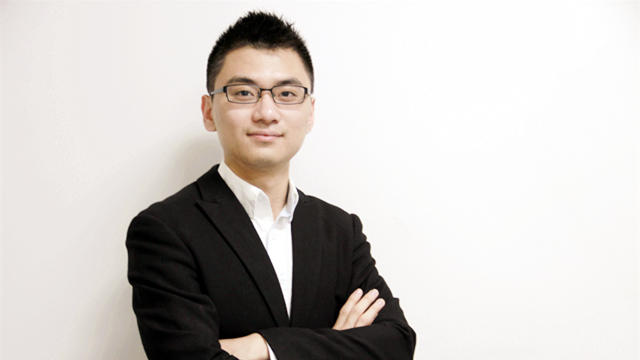2003年6月大学英语六级考试试题及参考答案(含听力音频)
Passage Three
Questions 31 to 35 are based on the following passage.
Take the case of public education alone. The principal difficulty faced by the schools has been he tremendous increase in the number of pupils. This has been caused by the advance of the legal age for going into industry and the impossibility of finding a job even when the legal age has been reached. In view of the technological improvements in the last few years, business will require in he future proportionately fewer workers than ever before. The result will be still further raising of he legal age for going into employment, and still further difficulty in finding employment when hat age has been attained. If we cannot put our children to work, we must put them in school.
We may also be quite confident that the present trend toward a shorter day and a shorter week will be maintained. We have developed and shall continue to have a new leisure class. Already the public agencies for adult education are swamped by the tide that has swept over them since depression began. They will be little better off when it is over. Their support must come from the taxpayer.
It is surely too much to hope that these increases in the cost of public education can be borne by the local communities. They cannot care for the present restricted and inadequate system. The local communities have failed in their efforts to cope with unemployment. They cannot expect to cope with public education on the scale on which we must attempt it. The answer to the problem of unemployment has been Federal relief. The answer to the problem of public education may have to be much the same, and properly so. If there is one thing in which the citizens of all parts of the country have an interest, it is in the decent education of the citizens of all parts of the country. Our income tax now goes in part to keep our neighbors alive. It may have to go in part as well to make our neighbors intelligent. We are now attempting to preserve the present generation through Federal relief of the destitute (贫民). Only a people determined to ruin the next generation will refuse such Federal funds as public education may require.
31. What is the passage mainly about?
A) How to persuade local communities to provide more funds.
B) How to cope with the shortage of funds for public education.
C) How to solve the rising unemployment problem.
D) How to improve the public education system.
32. What is the reason for the increase in the number of students?
A) The requirement of educated workers by business.
B) Raising of the legal age for going to work.
C) The trend toward a shorter workday.
D) People's concern for the future of the next generation.
33. The public agencies for adult education will be little better off because _____.
A) the unemployed are too poor to continue their education
B) a new leisure class has developed
C) they are still suffering from the depression
D) an increase in taxes could be a problem
34. According to the author, the answer to the problem of public education is that the Federal government _____. .
A) should allocate Federal funds for public education
B) should demand that local communities provide support
C) should raise taxes to meet the needs of public education
D) should first of all solve the problem of unemployment
35. Why does the author say "Only a people determined to ruin the next generation will refuse such Federal funds as public education may require" (Lines 10-11, Para. 3)?
A) Only by appropriating adequate Federal funds for education can the next generation have a bright future.
B) Citizens of all parts of the country agree that the best way to support education is to use Federal funds.
C) people all over the country should make contributions to education in the interest of the next generation.
D) Educated people are determined to use part of the Federal funds to help the poor.
Passage Four
Questions 36 to 40 are based on the following passage.
A new high-performance contact lens under development at the department for applied phys-ics at the University of Heidelberg will not only correct ordinary vision defects but will enhance normal night vision as much as five times, making people's vision sharper than that of cats.
Bille and his team work with an optical instrument called an active mirror — a device used in astronomical telescopes to spot newly emerging stars and far distant galaxies. Connected to a wave-front sensor that tracks and measures the course of a laser beam into the eye and back, the aluminum mirror detects the deficiencies of the cornea, the transparent protective layer covering the lens of the human eye. The highly precise data from the two instruments — which, Bille hopes, will one day be found at the opticians (眼镜商) all over the world — serve as a basis for the production of completely individualized contact lenses that correct and enhance the wearer's vision.
By day, Bille's contact lenses will focus rays of light so accurately on the retina (视网膜)that the image of a small leaf or the outline of a far distant tree will be formed with a sharpness that surpasses that of conventional vision aids by almost half a diopter ( 屈光度). At night, the lenses have an even greater potential. "Because the new lens — in contrast to the already existing ones — also works when it's dark and the pupil is wide open," says Bille, "lens wearers will be able to identify a face at a distance of 100 meters" — 80 meters farther than they would normally be able to see. In his experiments night vision was enhanced by an even greater factor: in semi-darkness, test subjects could see up to 15 times better than without the lenses.
Bille's lenses are expected to reach the market in the year 2000, and one tentative plan is to use the Internet to transmit information on patients' visual defects from the optician to the manufac-turer, who will then produce and mail the contact lenses within a couple of days. The physicist expects the lenses to cost about a dollar a pair, about the same as conventional one-day disposable lenses.
36. The new contact lens is meant for _____________.
A) astronomical observations
B) the night blind
C) those with vision defects
D) optical experiments
37. What do the two instruments mentioned in the second paragraph (Line 5) refer to?
A) The astronomical telescope and the wave-front sensor.
B) The aluminum mirror and the laser beam.
C) The active mirror and the contact lens.
D) The aluminum mirror and the wave-front sensor.
38. Individualized contact lenses (Line 7, Para. 2) are lenses designed _____.
A) to work like an astronomical telescope
B) to suit the wearer's specific needs
C) to process extremely accurate data
D) to test the wearer's eyesight
39. According to Bille, with the new lenses the wearer's vision _____.
A) will be far better at night than in the daytime
B) may be broadened about 15 times than without them
C) can be better improved in the daytime than at night
D) will be sharper by a much greater degree at night than in the daytime
40. Which of the following is true about Bille's lenses?
A) Their production process is complicated.
B) They will be sold at a very low price.
C) They have to be replaced every day.
D) Purchase orders can be made through the Internet.











